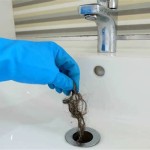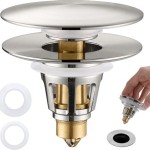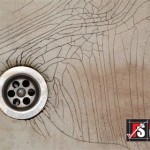How to Clean a White Cast Iron Sink
A white cast iron sink possesses a classic aesthetic that complements various kitchen styles. However, its porous surface is susceptible to staining and scratching, necessitating a specific cleaning regimen to maintain its pristine appearance. This article outlines effective methods and preventative measures to ensure the longevity and beauty of a white cast iron sink.
Cast iron sinks are typically coated with enamel, a durable but not impervious material. This enamel layer, while resistant to everyday wear and tear, can be damaged by harsh chemicals, abrasive cleaners, and sharp objects. Understanding the nature of the enamel and the types of stains commonly encountered is paramount to selecting the appropriate cleaning approach.
Before commencing any cleaning procedure, it is crucial to gather the necessary supplies. These typically include:
- Soft sponges and cloths: Microfiber cloths are particularly effective for gentle cleaning.
- Non-abrasive cleaners: Look for products specifically formulated for enamel or cast iron.
- Baking soda: A mild abrasive that can help lift stains.
- White vinegar: Effective for dissolving hard water stains and mineral deposits.
- Dish soap: A gentle degreaser suitable for routine cleaning.
- Soft-bristled brush: For scrubbing stubborn stains in hard-to-reach areas.
- Rubber gloves: To protect hands from cleaning agents and potential irritants.
Avoid using abrasive scrub pads, steel wool, or scouring powders, as these can scratch the enamel surface, leading to irreversible damage and a dull appearance. Furthermore, harsh chemicals such as bleach should be used sparingly and with caution, as prolonged exposure can discolor or etch the enamel. It is important to test any new cleaning product in an inconspicuous area of the sink before applying it to the entire surface.
Routine Cleaning and Maintenance
Consistent routine cleaning is essential to prevent the buildup of stains and maintain the sink's pristine condition. After each use, rinse the sink thoroughly with warm water to remove food particles and residue. Wipe down the sink with a soft sponge or cloth dampened with warm water and a mild dish soap. This simple step prevents stains from setting and makes more intensive cleaning less frequent.
For everyday cleaning, a solution of warm water and dish soap is generally sufficient. Apply the solution to the sink surface, gently scrub with a soft sponge or cloth, and then rinse thoroughly with warm water. Dry the sink with a clean, dry cloth to prevent water spots and mineral deposits from forming. This routine should be performed daily or after each use to maintain the sink's appearance.
Preventative measures are crucial in minimizing staining and damage. Avoid leaving acidic substances, such as lemon juice or vinegar, sitting on the sink surface for extended periods, as these can etch the enamel. Similarly, be cautious when handling sharp objects, such as knives and metal utensils, to prevent scratches. Using a sink protector or grid can help cushion the bottom of the sink and prevent scratches from heavy pots and pans.
Addressing Stubborn Stains
Despite regular cleaning, stubborn stains can occasionally develop on a white cast iron sink. Coffee, tea, and red sauces are common culprits. Various methods can be employed to address these stains, each with its own advantages and limitations.
Baking soda is a gentle yet effective abrasive for removing many types of stains. To use baking soda, create a paste by mixing it with a small amount of water. Apply the paste to the stained area and gently scrub with a soft sponge or cloth. Allow the paste to sit for several minutes before rinsing thoroughly with warm water. This method is particularly effective for removing light stains and scuff marks.
For more persistent stains, a solution of white vinegar and water can be used. Mix equal parts white vinegar and warm water in a spray bottle. Spray the solution onto the stained area and let it sit for 15-20 minutes. Then, scrub gently with a soft sponge or cloth and rinse thoroughly with warm water. Vinegar is effective for dissolving hard water stains and mineral deposits, which can contribute to a dull appearance.
In cases of particularly stubborn stains, a paste of cream of tartar and water can be employed. Apply the paste to the stained area, let it sit for 30 minutes, and then scrub gently with a soft sponge or cloth. Rinse thoroughly with warm water. Cream of tartar is a mild abrasive that can help lift difficult stains without damaging the enamel surface.
Hydrogen peroxide (3%) can also be used to lighten stains. Pour hydrogen peroxide onto the stained area and let it sit for several hours, or even overnight. Then, rinse thoroughly with warm water. Hydrogen peroxide is a mild bleaching agent that can help remove stains without the harshness of chlorine bleach. However, it's still advisable to test in an inconspicuous area first.
If natural solutions prove ineffective, specialized enamel cleaners are available commercially. Choose a cleaner specifically formulated for cast iron enamel sinks and follow the manufacturer's instructions carefully. Always test the cleaner in an inconspicuous area before applying it to the entire sink surface.
Preventing Scratches and Damage
Preventing scratches and damage is essential to maintaining the appearance and longevity of a white cast iron sink. Scratches not only detract from the sink's aesthetic appeal but can also create crevices where stains and bacteria can accumulate.
As mentioned earlier, avoid using abrasive scrub pads, steel wool, and scouring powders, as these are the primary cause of scratches. Instead, opt for soft sponges and cloths. When washing dishes, be mindful of metal utensils and cookware. Avoid dragging them across the sink surface. Using a sink protector or grid can provide a cushioning layer and prevent scratches from heavy or sharp objects.
Avoid dropping heavy objects into the sink, as this can chip or crack the enamel. If a chip or crack does occur, it is essential to repair it promptly to prevent further damage and staining. Enamel repair kits are available for minor repairs. For more significant damage, professional repair or replacement may be necessary.
When cleaning the sink, avoid using harsh chemicals such as bleach, ammonia, and drain cleaners. While these chemicals may be effective for removing certain types of stains, they can also damage the enamel surface and cause discoloration. If bleach is necessary, dilute it significantly with water and limit the contact time. Always rinse the sink thoroughly after using any chemical cleaner.
Regularly inspect the sink for any signs of damage, such as chips, cracks, or rust spots. Addressing these issues promptly can prevent them from escalating into more significant problems. Maintaining a consistent cleaning regimen and taking preventative measures will help ensure that a white cast iron sink remains a beautiful and functional element of the kitchen for years to come.
By implementing these cleaning methods and preventative measures, homeowners can effectively maintain the beauty and integrity of their white cast iron sinks. Consistent care and attention will ensure the sink remains a cherished fixture in the kitchen for many years.

How To Clean An Enameled Cast Iron Kitchen Sink The Inspired Hive

How To Clean An Enameled Cast Iron Kitchen Sink The Inspired Hive

How To Clean An Enameled Cast Iron Kitchen Sink The Inspired Hive

How To Clean A White Enamel Sink Look Like New

Natural Kitchen Cleaning Spray

How To Clean Kitchen Sink And Make It White Again

Natural Kitchen Cleaning Spray

How To Clean And Remove Stains From An Old Cast Iron Sink

How To Clean A White Enamel Sink Look Like New

How To Clean A White Sink Cast Iron Gathered In The Kitchen







